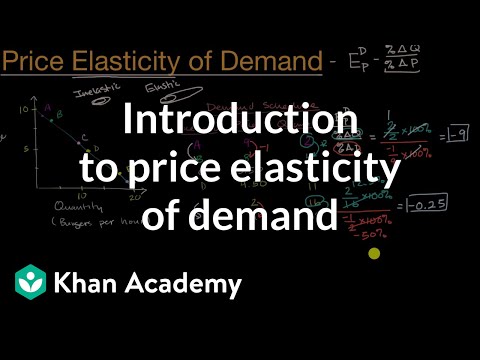What Does It Mean For Demand To Be More Elastic? Exploring Elasticity In Economics
Introduction To Price Elasticity Of Demand | Apⓡ Microeconomics | Khan Academy
Keywords searched by users: What does it mean for demand to be more elastic Inelastic demand, Price elasticity of demand, If demand is price inelastic, then, If demand is price elastic a 1 percent, Demand is said to be inelastic if, Example of elastic demand, Price elasticity of supply, The price elasticity of demand is defined as
What Happens When Demand Is More Price Elastic?
What occurs when demand exhibits greater price elasticity? When demand is elastic, an increase in price results in a notable decrease in the quantity demanded. This shift in consumer behavior leads to a notable change in the total revenue generated by the product or service. In essence, when prices rise in a market with elastic demand, total revenue tends to move inversely to the price change. Consequently, an increase in the price of a commodity often leads to a decrease in total income generated from the sale of that commodity. This phenomenon highlights the sensitivity of consumer demand to price fluctuations, which can have significant implications for businesses and market dynamics.
What Happens When Supply Becomes More Elastic?
Understanding the concept of supply elasticity is crucial when examining the effects of changes in demand on prices and quantities in a market. Supply elasticity refers to the responsiveness of the quantity supplied to changes in demand. If supply is highly elastic, it means that when demand increases, the price will only rise slightly, but the quantity supplied will increase significantly in response to the higher demand. On the other hand, if supply is inelastic, an increase in demand will result in a substantial price increase, but the quantity supplied will only show a limited increase in response to the heightened demand. This understanding is vital for assessing market dynamics and pricing behavior. The original passage lacks context and a clear explanation, making it challenging for readers to grasp the significance of supply elasticity.
Why Is Demand More Elastic In The Long Run?
Why does demand become more elastic over the long term? The key factor at play is time, which provides individuals with the opportunity to identify and adopt substitutes for goods and services. In the context of this phenomenon, consider the example of gasoline prices. In the short run, a sudden price hike might prompt a modest reduction in the quantity demanded. However, as time progresses, consumers have the chance to explore alternative modes of transportation, purchase more fuel-efficient vehicles, or even seek out public transportation options. These adjustments, which are often unavailable in the short run, contribute to a greater elasticity of demand in the long term.
Categories: Aggregate 99 What Does It Mean For Demand To Be More Elastic
See more here: taomalumdongtien.net

Demand can be classified as elastic, inelastic or unitary. An elastic demand is one in which the change in quantity demanded due to a change in price is large. An inelastic demand is one in which the change in quantity demanded due to a change in price is small.If demand is elastic, then a price increase reduces the total revenue. When the price increases, then the demand falls by a considerable percentage. Then, total revenue starts moving in contradictory directions. Therefore, total income declines when the price of any commodity rises.
Learn more about the topic What does it mean for demand to be more elastic.
- Elasticity of Demand | Ag Decision Maker
- If demand is elastic, how will an increase in price change total … – Vaia
- Price Elasticity of Supply – Economics Help
- Elasticity of Demand – The Economic Lowdown Podcast Series
- Elasticity vs. Inelasticity of Demand: What’s the Difference?
- Price Elasticity of Demand Meaning, Types, and Factors …